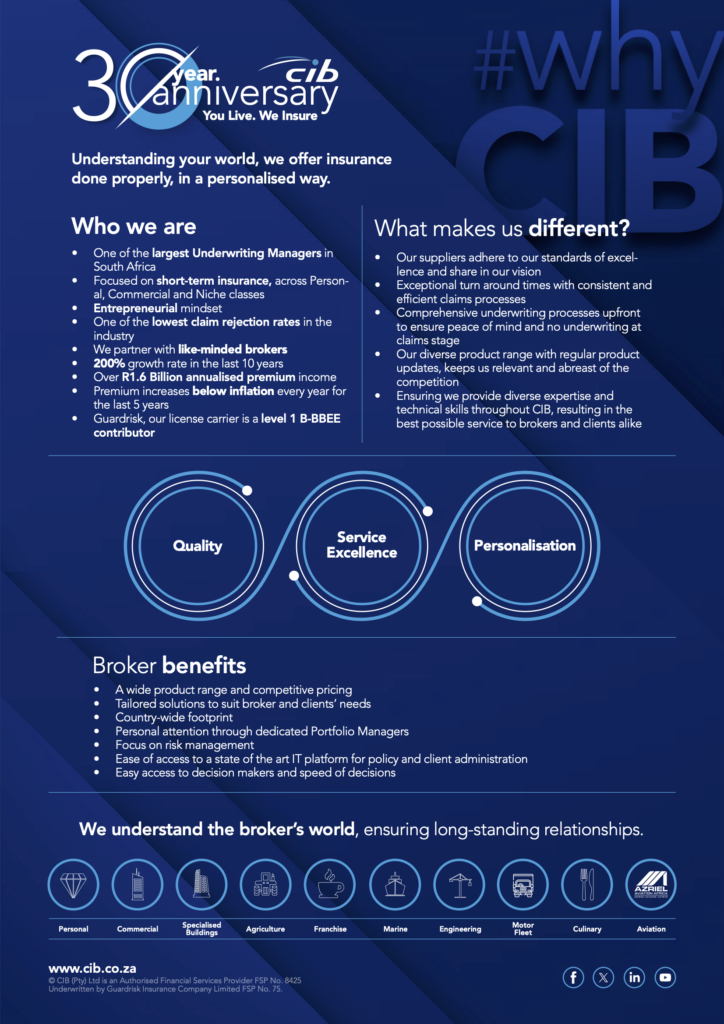By: Volker Von Widdern, Principal of Strategic Risk at Riskonet Africa

Severe storms that have struck the Western Cape underscore the escalating severity and impact of such events, according to South African-based risk consultancy Riskonet.
The organisation is urging businesses across South Africa to grasp the full scope of these dangers and adequately prepare for future extreme weather events.
These severe weather events have now become commonplace as we’re seeing a couple a year. It’s no surprise that these events are occurring as temperatures reach record highs around the globe as a result of the climate emergency.
The atmosphere now carries 7% more moisture than a few decades ago. Higher ocean and atmospheric temperatures mean that energy levels in our climate have increased substantially. When storm systems develop, they will generate higher wind speeds and much higher concentrations of rainfall.
The consequences of these shifting climate patterns can be dangerous and pose a significant risk to properties. These events are complex and multifaceted, and that’s why it can be difficult for businesses to know what to expect.

30 Year anniversary
Understanding your world, we offer insurance done properly, in a personalised way.
We understand the broker’s world, ensuring long-standing relationships.
© CIB (Pty) Ltd is an Authorised Financial Services Provider FSP No. 8425 Underwritten by Guardrisk Insurance Company Limited FSP No. 75.
A broader picture of some of the weather events that organisations should be preparing for. Flash floods, caused by concentrated rain that overwhelms drainage systems, result in water torrents that damage infrastructure and property across all sectors. Excessive, continuous rainfall also leads to water accumulation, rivers breaking their banks, and dam overflows. Severe hail, with large hailstones and high volumes, damages property through impact and overloaded roofs, causing major leaks and internal flooding. Severe wind poses a significant risk, particularly to informal settlements that are not strong enough to withstand high winds, and pole-based suburban and rural electricity networks, which are likely to be blown down, causing power disruptions and posing risks to communities. Desert-based wind storms can generate huge dust clouds that disrupt solar plants and electronic communications.
Increasing wind speeds can be highly destructive. In principle, as wind speeds double, the related force created is quadrupled. This means that a 100 kph wind exerts 16 times more force than a 25 kph wind. Building and roof specifications, particularly for older properties, should be reviewed.
Extreme weather events have shown a consistent upward trend over recent years, and this trend is expected to continue, emphasising the urgency for proactive measures. Developing medium to long-term plans is crucial to enhance resilience against severe weather, advocating for initiatives ranging from basic roof integrity improvements to comprehensive flood prevention strategies. The evolving landscape of severe weather also necessitates innovative approaches to financial protection. Current insurance markets are already facing limitations in covering severe weather risks.
We urgently need new forms of financial protection to address these challenges effectively. This call to action underscores the critical need for adaptive strategies and collaborative efforts to mitigate the impacts of severe weather on communities and economies alike.

